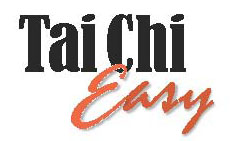Current Tai Chi Research
Whether you want to improve
your balance, increase your flexibility, relieve pain, recover from injuries
or diminish the effects of daily stress, the practice of Tai Chi is suitable
for both men and women and for people of all ages, even those in their
eighties and nineties.
The Tai Chi Easy program evaluation studies are from formal evaluation reports and published journal articles. Future study proposals are also being designed and considered.
Meditative Movement as a Category of Exercise: Implications for Research - Journal of Physical Activity and Health, March 2010
Dissemination and Benefits of a Replicable Tai Chi and Qigong Program for Older Adults - Geriatric Nursing, July 2010
A Comprehensive Review of Health Benefits of Qigong and Tai Chi – American Journal of Health Promotion, July 2010
See some of the key areas for
Tai Chi research below:
Genomic
counter-stress changes induced by the relaxation response Mind-body
approaches that elicit the relaxation response include: various forms
of meditation, repetitive prayer, yoga, tai chi, breathing exercises,
progressive muscle relaxation, biofeedback, guided imagery and qigong.
A
randomized, controlled trial of tai chi for the prevention of falls:
the Central Sydney tai chi trial.
Balance
control, flexibility, and cardiorespiratory fitness among older Tai
Chi practitioners.
Comprehensive
therapeutic benefits of Taiji: a critical review
Effects
of tai chi exercise on pain, balance, muscle strength, and perceived
difficulties in physical functioning in older women with osteoarthritis:
a randomized clinical trial
Effects
of tai chi mind-body movement therapy on functional status and exercise
capacity in patients with chronic heart failure: a randomized controlled
trial.
Evaluating
the safety and potential use of a weight-bearing exercise, Tai-Chi Chuan,
for rheumatoid arthritis patients
Tai
Chi as an adjunct to cardiac rehabilitation exercise training.
Tai
Chi for treating rheumatoid arthritis
The
effect of Tai Chi on cardiorespiratory function in patients with coronary
artery bypass surgery.
|

